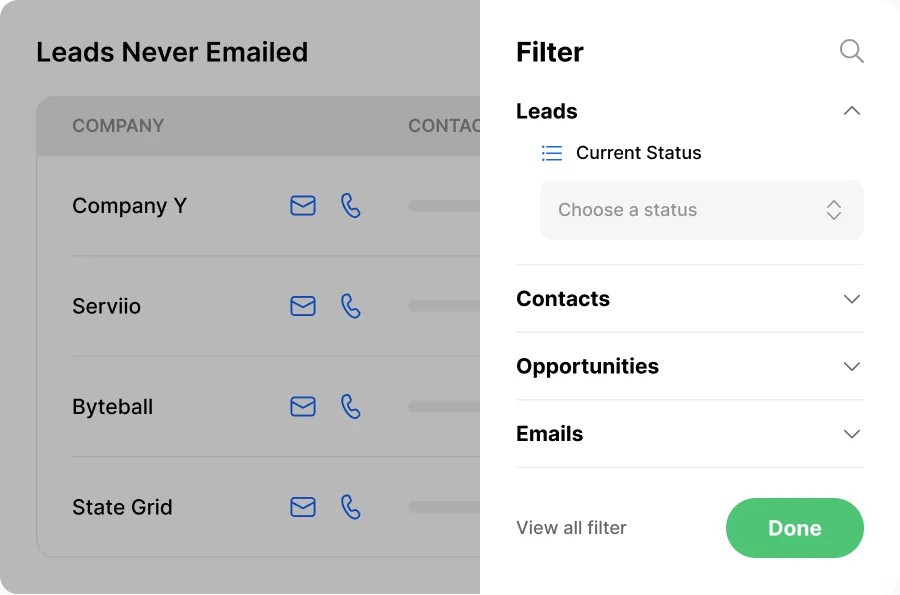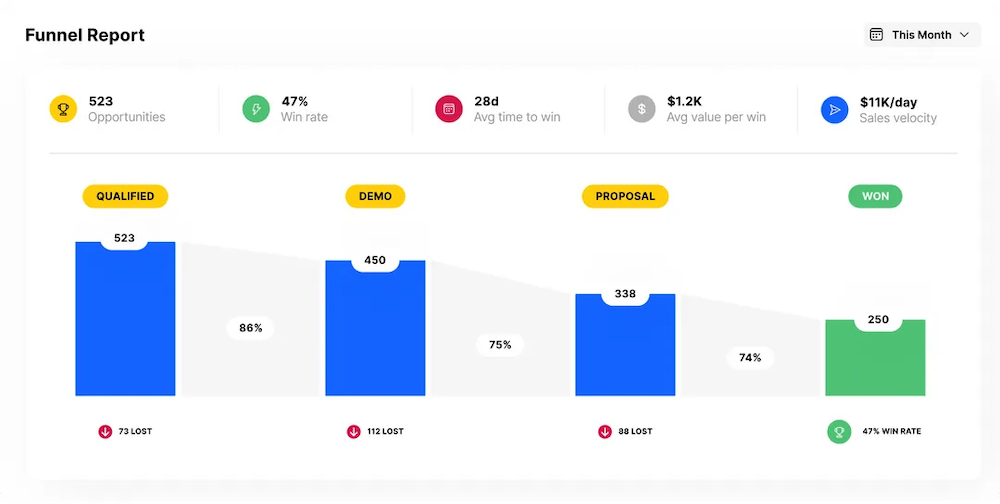9 Founder-Led Sales Strategies, Tips, Methods, & Best Practices for Stronger Sales in 2023

Late nights, early mornings, and non-stop pitches.
Sound familiar?
Life as a startup founder can be hectic. It’s challenging to maintain focus when there are a thousand items on your to-do list. How do you decide what’s most important to the success of your startup?
Prioritizing sales is how to win at the startup game.
After all, your B2B sales strategy is the foundation for achieving growth and hitting those sales targets.
When it comes to B2B sales, you can’t just rely on sending out countless emails and hoping for the best. To truly scale your startup, you need a solid plan.
That’s where founder-led sales strategies come in. They help you get to know your customers, keep your operations lean, and drive profits.
Here are nine proven strategies to help you implement a proactive and repeatable sales process and unlock the full potential of your B2B startup.
Founder-Led Sales Matter: Why Every Startup Needs a Sales-Driven Founder
If you’ve never worked as a salesperson, the idea of prioritizing sales might make you uncomfortable.
You’re a startup founder, after all.
So does your business really need you to lead sales too?
The truth is yes.
Here’s why a sales-driven founder can drive impressive results for startups:
- Unrivaled passion: You had the vision and entrepreneurial spirit to turn an idea into reality. This passion is infectious and will convince customers to buy.
- Deep knowledge: You know your products or services better than anyone else. Plus, you’re able to communicate their value proposition with unmatched enthusiasm.
- Founders know their ideal customer profile: Your knowledge of your target audience will help you empathize and speak their language rather than just selling.
When you take the lead on sales, you can make sure your early-stage startup targets the right prospects and delivers messaging that resonates with its audience from the get-go.

Benefits of Founder-Led Sales for Startups
Still not convinced that your startup needs you to step up and lead sales?
Here are five key advantages to having a founder-led strategy for startups.
- Build credibility: Eighty-eight percent of B2B buyers will only buy if they see the rep as a trusted advisor. When founders are actively involved in the sales process, it shows they’re personally invested in the success of their business. This level of commitment helps new customers trust the business.
- Remain agile: Given their deep understanding of product-market fit, founders can quickly identify new opportunities and pivot their sales strategy to take advantage of them.
- Bring clarity to your offering: When you’re speaking with potential and current customers, you’ll learn more about their pain points and what problems they want to solve with your offering. You’ll quickly identify which prospective customers are right for your solution and how you can adapt it to help more people.
- Create a repeatable sales process: As the first salesperson, you’ll have the chance to train future team members and get them to follow the most effective sales workflows and templates of your choosing.
- Boost your bottom line: Founder-led strategies let you close your first sales without needing to recruit a team of account executives. The reduction in cost will help you cut expenses and drive profits.
9 Strategies for Founder-Led Sales Success
Most early-stage companies won’t have the budget to hire a team of salespeople. When you’re in the early days, you need to keep operations and your team lean.
So it’s best for founders and co-founders to take the lead and develop a repeatable sales strategy.
Ready to build a sales strategy that achieves sustainable and scalable revenue growth?
Here are nine strategies to get started:
Step 1: Get to Know Your Ideal Customer
Without knowing your target audience, it will be hard, if not impossible, for any sales leader to gain traction.
Invest plenty of time into getting to know your potential customers. Spend time identifying their pain points and jobs to be done.
Think about where your potential customers may spend time. Are they active on LinkedIn? Do they spend time in Slack communities? Is there a specific podcast they listen to?
Create a list of these places and schedule regular times to engage. Looking at the kinds of questions they ask or the content they interact with will help you understand the problems they want to solve.
With this information, you can identify how to deliver the right product at the right price point with a compelling offer.
Step 2: Understand and Create Your Ideal Customer Profile (ICP)
Once you know your product’s target audience, it’s time to create an Ideal Customer Profile (ICP) or buyer persona.
Your ICP describes your ideal customer in terms of their demographics, behaviors, and needs. As you create buyer personas, be as detailed as possible. Dig into their daily work routines, problems, and current hang-ups. Empathize with what it feels like to handle these problems and what kind of a solution you’d hope for in their shoes.
Give each of your buyer personas a name and description of their possible career background and experience. That way, when you come to selling, it’ll be much easier to present a compelling solution that speaks to them.
Potential customers will feel that you understand them and are generally interested in helping and not just selling.
Step 3: Develop a Repeatable Sales Process
As soon as you see success with your sales strategy, it’s time to create a repeatable process. A documented process will help you achieve sustainable, scalable revenue growth. Plus, it’ll mean any co-founders or future sales team members have a clear pathway to follow.
All repeatable sales processes should include the following steps:
- Lead generation: How do you identify prospects? How do customers find you? Document your lead generation strategies so they’re easy to replicate.
- Qualification: The majority of salespeople say that only half of their initial prospects prove to be a good fit for their offering. When you have a lead, you need to know how to qualify them for your offering. Think about how budget, company size, past solutions, and future goals impact a customer’s suitability for your product.
- Nurturing: Depending on your average sales cycle and solution, you’ll spend time building and developing relationships with potential and current customers. Is there a specific amount of time for some customers? Can you upsell new product features to existing ones?
- Closing: Everything from the final call or email until the onboarding process needs to be written down. That way, all customers receive a consistent experience.
Step 4: Create a Sales Playbook
What works in sales for one startup may not work for another—every startup’s sales strategies will be slightly different. Plus, when you’re in growth mode, you’ll experiment with multiple tactics and techniques.
When you have a handle on what works for your company, it’s important to document it. That’s where a sales playbook comes in.
It’ll help you, your co-founders, and your future sales team repeatedly close deals successfully.
A sales playbook outlines your sales process, messaging, objection handling, and other important information for your sales team to reference. Include techniques, best practices, and even sample scripts from successful sales calls.
Outline the follow-up workflow you’d like salespeople to execute on. Highlight how salespeople should navigate the onboarding process.
Setting up a sales playbook will also help you standardize all sales activities. Remember, your sales playbook should evolve alongside your business, so update it as your process develops.
Taking the time to create a playbook should ensure consistency and alignment across your sales team and make it easier to onboard new sales reps.
Step 5: Use Sales Enablement Tools
As your startup grows, deals develop, and the admin work continues to build up, you’ll need to lean into tools to streamline the process. Sales enablement software is there to automate and streamline your sales tasks.
In the early days, beware of adding too many tools to your sales workflows and overcomplicating things.
It’s best to use only the necessary tools.
Some sales enablement tools to get started with include:
- CRM systems
- Call booking systems
- Email marketing platforms
- Sales intelligence platforms
- Sales engagement software
Step 6: Build a Strong Sales Team
Once you’ve established a clear founding sales strategy and you’re driving revenue, it’s time to scale up and build a sales team.
If you’ve never hired anyone before, it can feel like a huge step in bringing on a new team member.
And, truth be told, it is.
First, you need to identify the right talent. It’s important to find someone whose work values match up with your company’s.
While it’ll be hard for their passion for your product to match the founder’s, they need to demonstrate interest and sales experience in your agency.
Next, you’ll need to provide training and coaching. Remember those repeatable sales processes and playbooks? This is where they’ll come into their own.
Step 7: Focus on Sales Goals
Next, set and stick to achieving sales goals. It’s key to strike the balance between being realistic and ambitious.
Be too pessimistic, and you might stunt growth. On the other hand, if you’re too optimistic, you may end up piling on too much pressure and achieve unsustainable growth or, worse, burnout.
Write your goals down and set up regular reviews. Check in every month on short-term sales targets. Schedule quarterly sessions for long-term goals to check if you’re on track.
Don’t forget to celebrate your success along the way, either. When you’re in growth mode, it’s easy to move from one milestone straight to the next. But acknowledging progress along the way will keep spirits and motivation high.
Step 8: Monitor Sales Performance
The most important part of any sales strategy—monitoring and measuring sales performance.
Tracking and measuring your sales performance is essential for identifying areas of improvement and optimizing your sales process. This includes monitoring key performance indicators (KPIs) and regularly analyzing sales data.
Keep salespeople accountable by scheduling regular performance review sessions. During these moments, assess whether they’re meeting or missing targets. Ask how they feel their sales are going and if they need more resources to close deals more effectively.

Step 9: Continuously Improve Your Sales Strategy
What do the most successful sales strategies have in common?
They’re never static.
Your sales strategies should evolve alongside changing markets, customer needs, and competitors’ actions.
As part of the process to improve your sales strategies, start by:
- Gathering customer feedback
- Analyzing sales data
- Testing new sales tactics
- Sharing new messaging
The key takeaway here is even if you’re smashing sales targets every month, you still need to evolve. No matter how big your company gets or how much monthly revenue you reach, you will always need to experiment with new sales tactics and messaging.
If not, one of your competitors may swoop in, or you could end up being slow to react to a changing market.
Prioritize Founder-Led Sales for Sustainable Growth
Leading B2B sales as a startup founder can be a rollercoaster of a ride. It’s a balancing act for sure, but the potential rewards are worth it.
When you build a proactive repeatable sales process, scale up sustainably, and keep a close eye on your sales targets and metrics, you’ll be more likely to drive profits.
Recent Comments